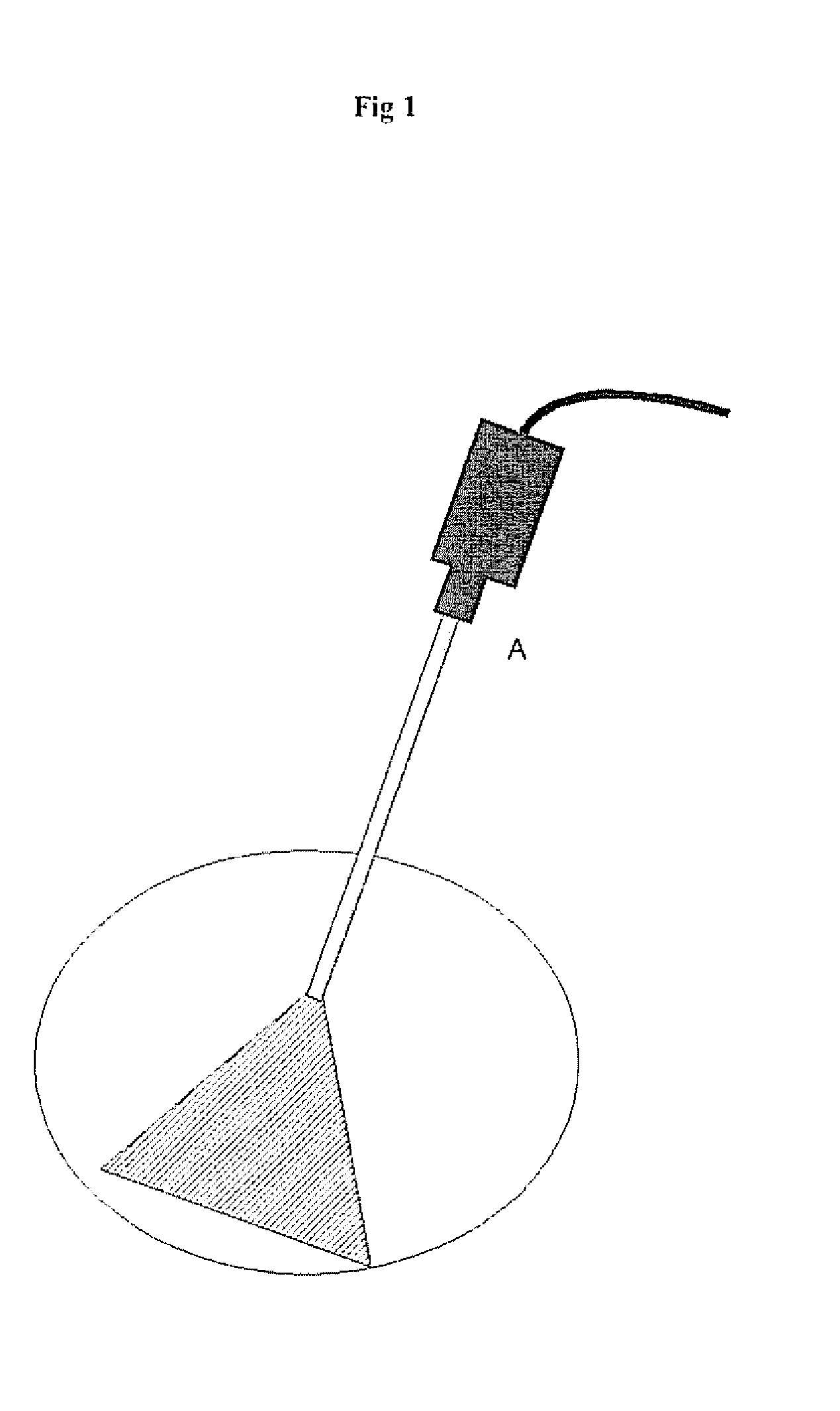Endoscopic vision system
- Summary
- Abstract
- Description
- Claims
- Application Information
AI Technical Summary
Benefits of technology
Problems solved by technology
Method used
Image
Examples
example 1
Multiview Endoscopic Visualisation with Fine Tuning of the Multi View Camera Network
Embodiment of the Invention in Laparoscopy
[0053]In laparoscopy, being endoscopy in the abdominal cavity, endoscopes are normally rigid with a camera outside the body. The endoscope is inserted through a single small incision. Additional incisions allow to insert specific endoscopic (surgical) instruments. The working field contains considerably large variations in depth, relatively to the standoff (distance between tissue and lens) of the endoscopic telescopic lens. The telescope is used to visualize a particular region of interest within the abdominal cavity. This means that secondary regions are not visible to the surgeon or her / his staff. Nevertheless it often occurs that one or more assistants are keeping structures away outside the field of view. In such case this is done without any vision based feedback for neither the surgeon nor her / his assistants. The same reasoning applies when surgery is ...
example 2
Multiview Endoscopic Visualisation and Generation of a Synthetic Overview Image or Panorama
Implementation of the Optical Large View Endoscopic Systems of Present Invention
[0065]It is explained beforehand that scene interpretation and analysis—or the ‘intelligence’ offered by the endoscopic control unit—is what this apparatus really distinguishes from any other endoscopic imaging system.
[0066]On the one hand the apparatus can generate a regular endoscopic view, on the other hand the underlying scene model opens the way to a massive set of new technical / medical applications. The presentation of this enhanced information can be done transparently (ie a surgeon is presented subtly enriched information without s / he even realising it) or very explicitly. Examples of both will be provided as an illustration of the application domain. However an exhaustive description of the complete set of possible applications simply is not feasible. We hereunder as embodiments rather provide pointers to ...
first embodiment
[0067]Integrating the different video feeds coming from the system described under ‘Example 1’ leads to a truly enlarged field of view, as a new virtual overview camera can be build. This virtual camera view interpolates smoothly between the real cameras and their real resolutions. This can not only make the new overview possibly an extremely wide angle, but also provides a movable viewpoint without the need for moving cameras. The same is true for adapted resolutions. The exact size of the wide angle is determined by the area of the scene coveted by the multi view cameras.
[0068]To this end a set of ‘secondary cameras’ (minimal two) is inserted, and attached so that the working field can be imaged (see also the description earlier). It is not a prerequisite for these cameras to be fully calibrated beforehand, but having a pre-calibration available increases robustness. Such a pre-calibration is performed using one of the standard techniques described in the literature (eg a “Tsai ca...
PUM
 Login to View More
Login to View More Abstract
Description
Claims
Application Information
 Login to View More
Login to View More - R&D
- Intellectual Property
- Life Sciences
- Materials
- Tech Scout
- Unparalleled Data Quality
- Higher Quality Content
- 60% Fewer Hallucinations
Browse by: Latest US Patents, China's latest patents, Technical Efficacy Thesaurus, Application Domain, Technology Topic, Popular Technical Reports.
© 2025 PatSnap. All rights reserved.Legal|Privacy policy|Modern Slavery Act Transparency Statement|Sitemap|About US| Contact US: help@patsnap.com



